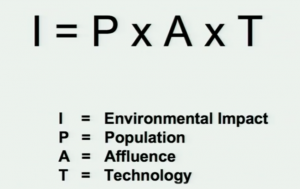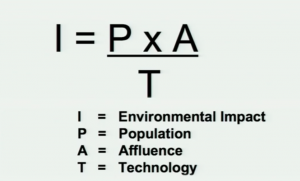When I was choosing my Scholars program, ENR was not my first choice as it was not the program that I felt directly related with my major and most of my interests. However, throughout time in the program and assignments designed specifically for me to reflect on such a thing, I found that my future weighed very heavily on things that we discussed through this program. Whether it be my health as a human being on this planet that we all share, or as a future (hopeful) business owner. We spent a semester focusing on the 3 p’s of sustainability- People, Planet, and Profit- to prove to people like me who think sustainability and the environment are incredibly important, but don’t effect their career.
This has changed the way I hope to run my business, this has changed some of my plans as I want to be a great veterinarian who is as sustainable as possible. The Earth Month challenges were a good first step in how to do that. For these, I focused on the area of food and water, which won’t necessarily shape my business, but they do shape me. I learned through the process I was capable of being much more disciplined than I ever thought I could be, and I was able to eliminate many toxins from entering my body and the Earth. The changes seemed so easy to implement little by little and after you had done them for a week, it was almost hard to convince myself to do anything other than continue. I had eliminated meat and coffee from my diet at one point, two “staples” of my life, and felt drastically better. I eat some meat now, but in much smaller amounts than I did before. My trash can is less full as I have less food packaging waste to throw away and there is now no compostable material taking up room in there. The recycling has it’s place, as does the compost, and my trash can is left nearly empty every week with what I am contributing to our growing landfill problem.
The Earth Month challenges also made me more aware of my carbon foot print and what impact I was leaving on the Earth in general. Recently, I have read extensive research on newer, cleaner energy sources and can only hope these make a debut to the technological world within the next few decades to reduce everyones impact. To greater reduce my footprint, I would love to take up biking while I’m here in Columbus as opposed to driving. Multiple reasons lead me to this desire as it is cheaper, more efficient, and better for your health than simply driving a car everywhere. Sadly, this is not feasible for when I return to Gallia Co., but I hope one day we improve our infrastructure to make it more of a possibility.
To speak more about my future business, as it’s an idea that thoroughly excites me, I would love to recycle in my clinic. I have never been to a clinic that practices this, but thankfully the American Veterinary Medical Association has plenty of information on creating an eco- friendly clinic here. When working so closely with my veterinarian in the past, I have a good idea of the amount of paper waste that goes into landfills and how the pet feces could potentially contaminate groundwater runoff. These are two problems I had not considered until this class this year and that I now realize could possibly be simple solutions by the time I get around to opening a clinic.
My hopes are that as we continue to progress as a society, that these ideas continue to grow and develop throughout the world so solutions will follow suit. The more solutions to a problem we have, the more likely we are able to solve it. Earth Month and this class have both taught me that the smallest changes can have massive impacts that go beyond the general scope of what you might think. Whether that be removing one animal from an ecosystem and watching it fall apart, or implementing a new eco-friendly piece into your routine and watching you feel better about yourself and the things you are doing for yourself and our world.
I am very thankful for this class, the opportunities it has given me, and the ideas it has allowed me to create on my own. Before, I would’ve just been a veterinarian, but why not be a sustainable business owner, with a LEEDS certified clinic too?
We can hope.




